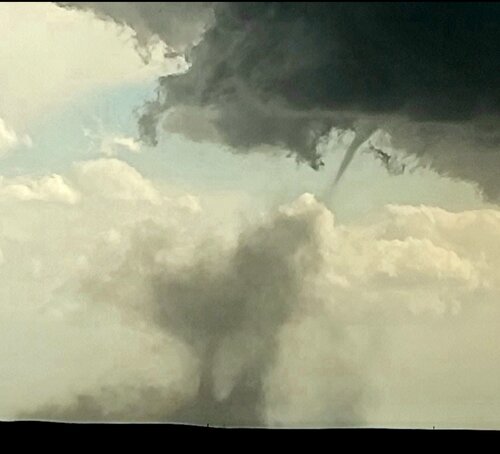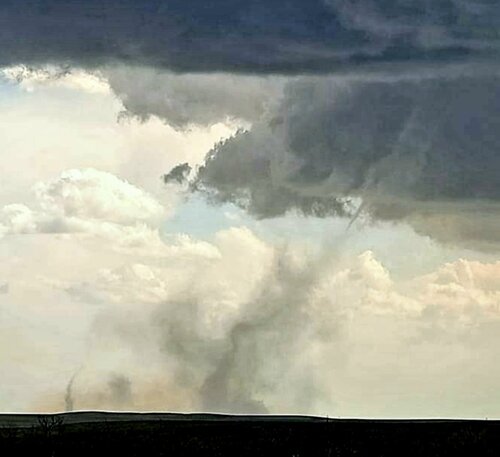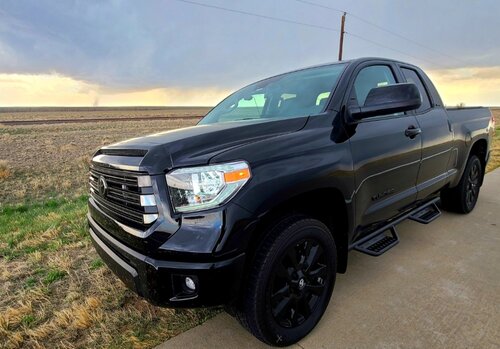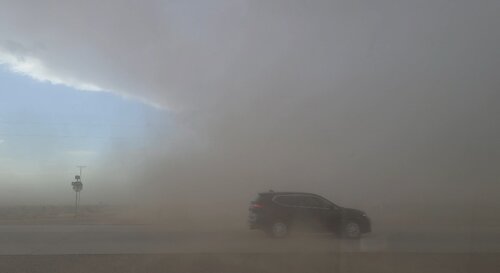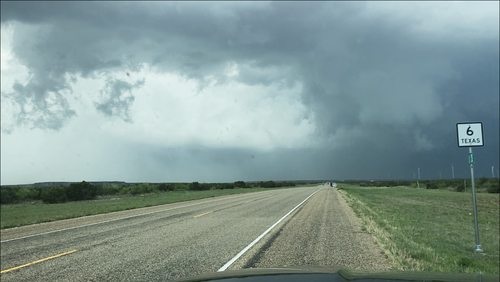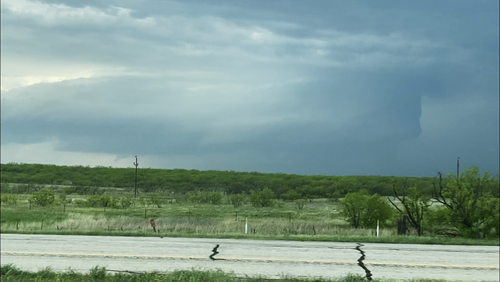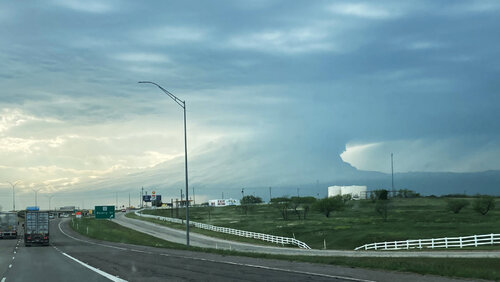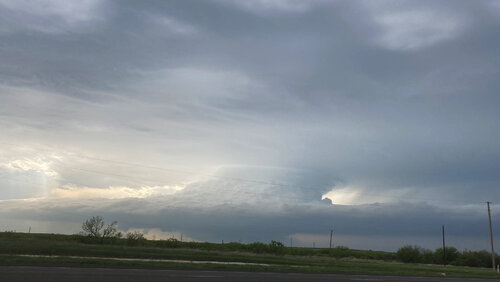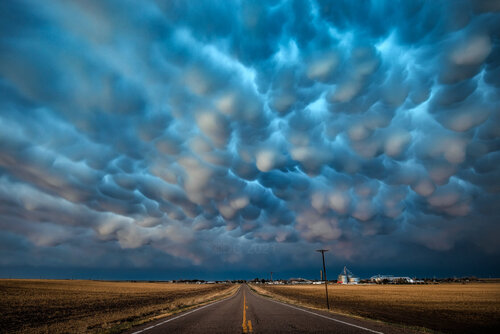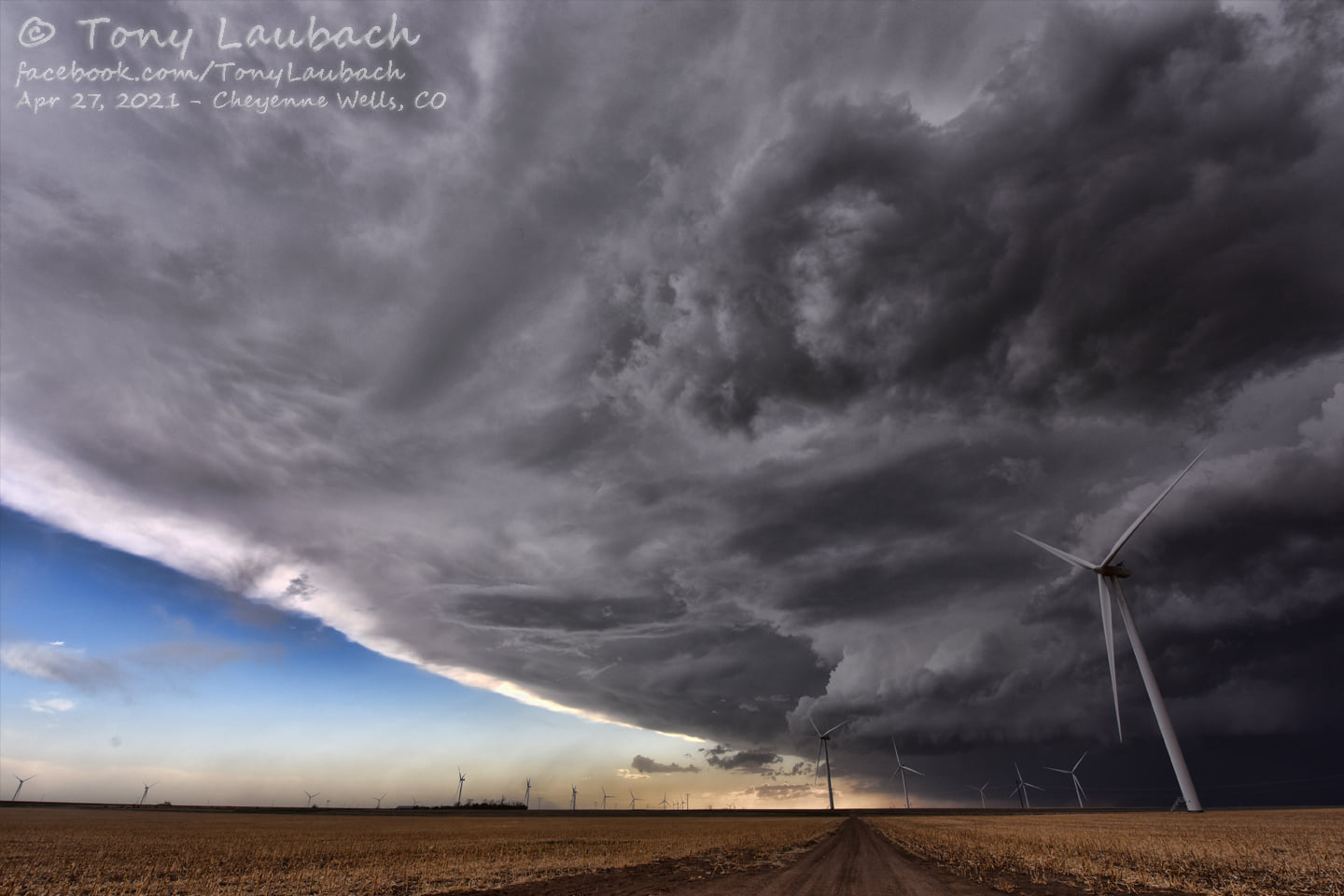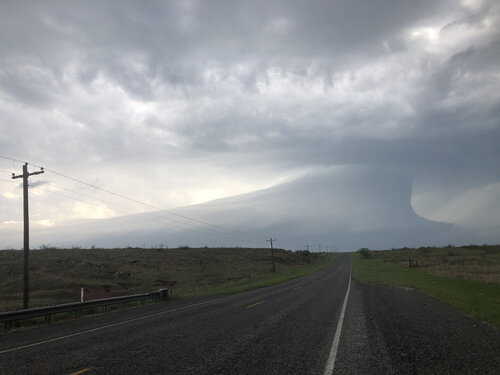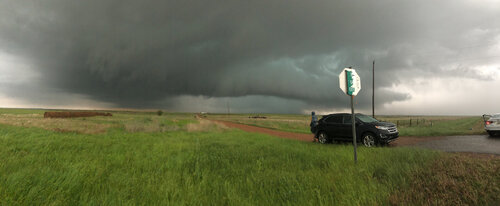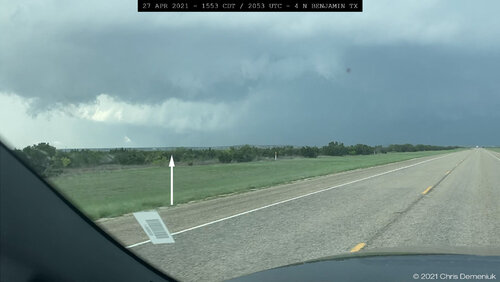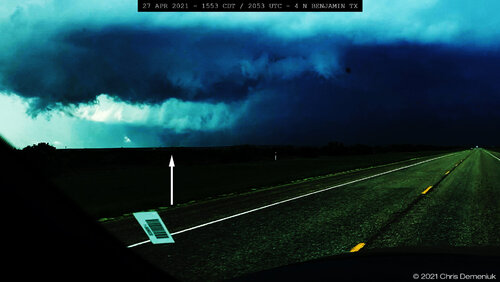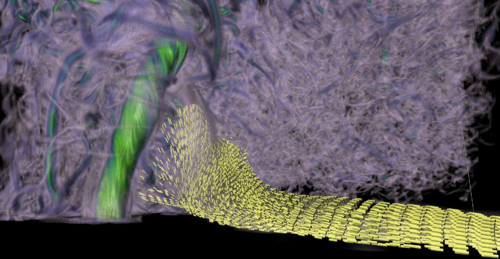9/22/2023
This report is quite a bit late, but going over the other reports for 4/27/2021, I think it is worth documenting the TX supercell that formed that day from a different point of view. We started from Tulsa that morning with the target area E of the dryline near Lawton by 2PM CDT. By 2:45PM CDT, “a robust supercell” (SPC MCD #0436) had developed SW of Paducah, so we targeted that cell and planned to intercept it near Crowell.
But we did not foresee that our route would involve construction and a section of
stoplight-controlled-alternating-one-way-traffic that kept us stopped for almost 20 minutes. By the time we got through, Crowell as a target seemed a bit problematic: the cell had taken a pronounced RH turn and we would be approaching it from the north, through a region of large hail and heavy rain. US Hwy 183, south out of Vernon seemed like the best option at this point, and by 4PM CDT were positioned to observe the storm, looking into the inflow notch as it approached.
At 4:20 PM CDT, the cell was still about 14 miles away, but lost in the haze and murk (no picture.)
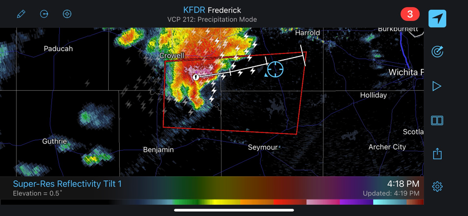
By 4:30PM CDT, the basic structure of this supercell is evident:
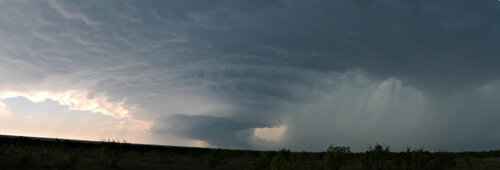
4:33PM CDT (2133Z). Looking WSW from Stop 1, 14 SE of Vernon, TX. Nikon D60 18mm lens; Panorama by Hugin
Putting this together with the other reports, it looks like the “tail” of this cell, partially obscured by the front flank precipitation core, is not the extensive inflow band visible in pictures taken by other chasers, looking north/south. These features are almost on the ground, while the impressively-long inflow bands documented by other chasers look to be 1-2km AGL (at least). Based on the visual angle subtended by the ground-to-cloud base, we estimate the wall cloud base to be about 250m. The structure looks to be a fairly open helix:
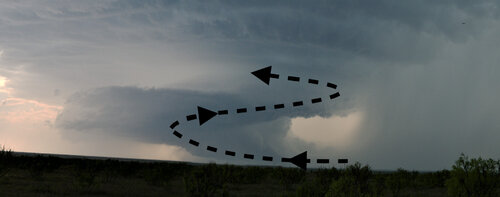
The radar view, on the other hand, is somewhat underwhelming, lacking the pronounced hook echo I imagine when I think “classic supercell”. We are located approximately at the position of the white star. Note: Sidelobe contamination in the radial velocity scan renders the mesocyclone unrecognizable, so we are not bothering to show it here.
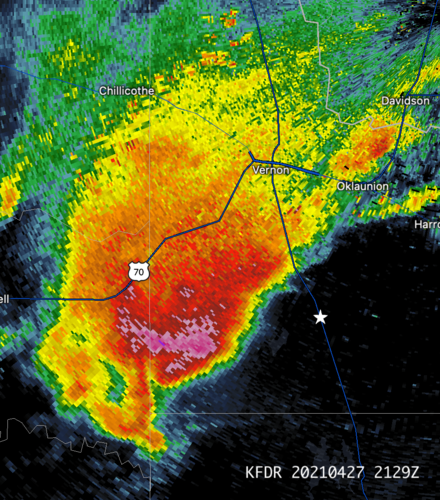
At 1433Z, a small funnel cloud formed—during the next 10-15 minutes we would also see a gustnado on the primary rear flank gust front as the PRFGF occluded the mesocyclone, and a weak tornado (rotating funnel with dust whirl on the ground).
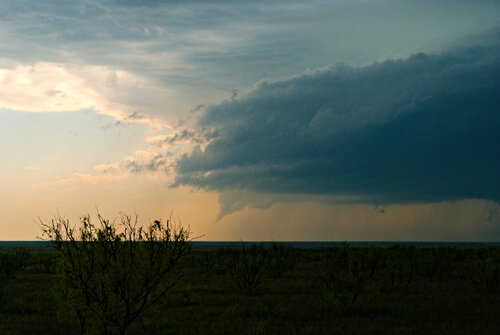
In short, multiple scales of rotation were evident in this storm. This obvious statement will be made more clear in the figure below, which is based on video recordings of the cell as it approached.
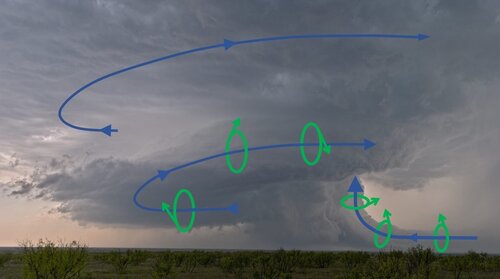
Notice the ground-based inflow structures to the right (north) as they become more visible with the approach of the storm in the video below: they are rotating cyclonically about a horizontal axis as they are drawn up into the updraft. It’s hard to see in this video, and I may need to make a YouTube account to make better quality video available (if there’s interest from the group).
As much as I have read about the generation of vertical vorticity by upward tilting of horizonal vorticity, I never thought to see it outside of a numerical model.
Anyone who attended the 2022 National Storm Chasers conference might recall a talk by Dr. Bruce Lee on enhancement of low-level mesocyclones by streamwise vorticity currents (SVC). After reading through his research, I am satisfied that these inflow features are SVC. There were at least two SVC visible most of the time, and occasionally it
appears there are three (really hard to say.)
View attachment video1.mp4
By 4:44 CDT (2144Z), the mesocyclone was fully-occluded (a little help from the readers would be appreciated here, to be sure that I am interpreting the ground view and radar view properly.) The SVC tubes (assuming I got that right, as well) actually recede out of sight into the FFD rain curtain on the right. They were impressive to see and I wish pictures could do them justice.

4:44PM CDT (2144Z). Looking WSW from Stop 1, 14 SE of Vernon, TX. Nikon D60 18mm lens; 137˚ Panorama by Hugin
With apologies to
@JamesCaruso(

), RadarScope no longer has this data archived so I can't use the screen tools. Instead, I had to use RadarScope PNG's I saved to document the event when I got home. So, what follows is a blink comparator presentation of the lowest reflectivity and radial velocity scans. There is still significant sidelobe contamination, but at least the doppler signature of the mesocyclone is not obscured.
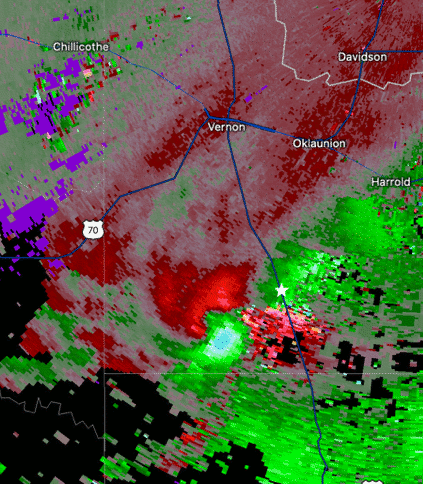
We are pretty close to the mesocyclone at this point, and I will save the bandwidth of further documentation, because I really need a website to present the rest of my pictures and video. EVENTS/REPORTS on StormTrack may not be the best place for analysis like this (I will let the moderators decide). By 4:55 PM CDT, we headed south on US Hwy 183 just in time to avoid the heavy rain and hail. Curiously, there were not many chasers at this site, and most of them headed north, into the core. Undoubtedly this was the best strategy to reposition ahead of the cell, but it was a risk I did not want to take.
We were treated to one final funnel cloud--pretty sure this is the one visible in
@Chris Demeniuk 's post above, taken from further away and a better panoramic view of the cell than I could get from my "inflow notch" position.
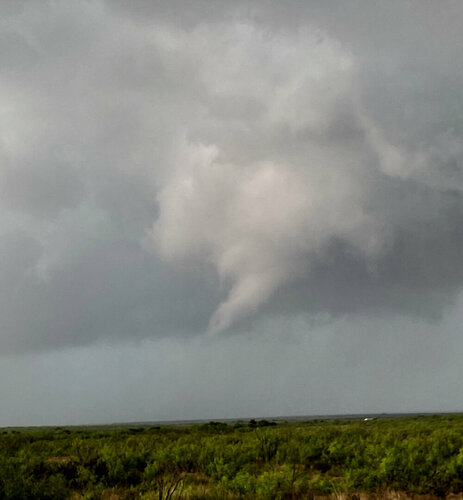
4:57PM CDT (2157Z). Looking N from Stop 2, 16 SE of Vernon, TX. iPhone photograph.
Following this short stop, we tried to make our way north to get back into a good position, but it was not going to happen. My luck with catching a storm with a head start has not been good so far--it's what puts the "chase" in Chasing.
To summarize, it's an open question whether such a late report has any value, but given it helps complete the picture of this storm (in my opinion), I hope it has value. Also--it's my favorite Plains chase so far--despite, again, no tornado worthy of the name.
